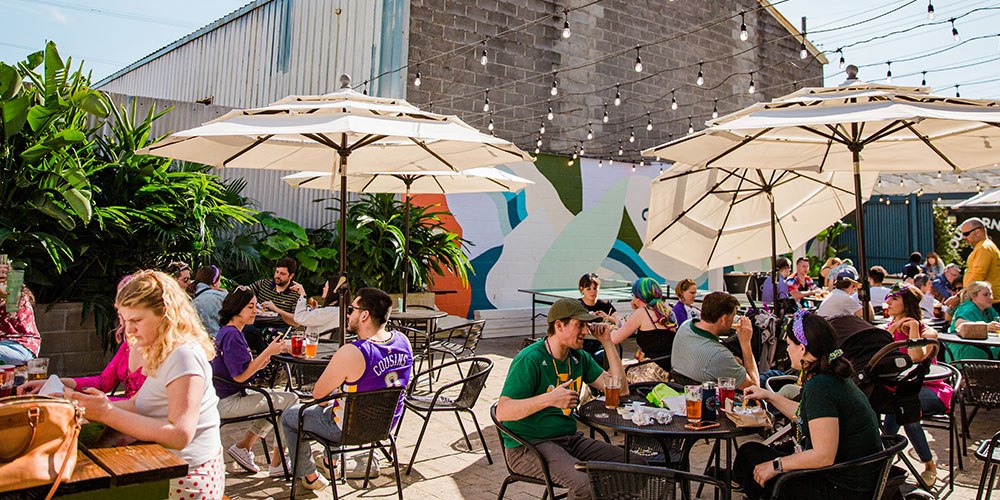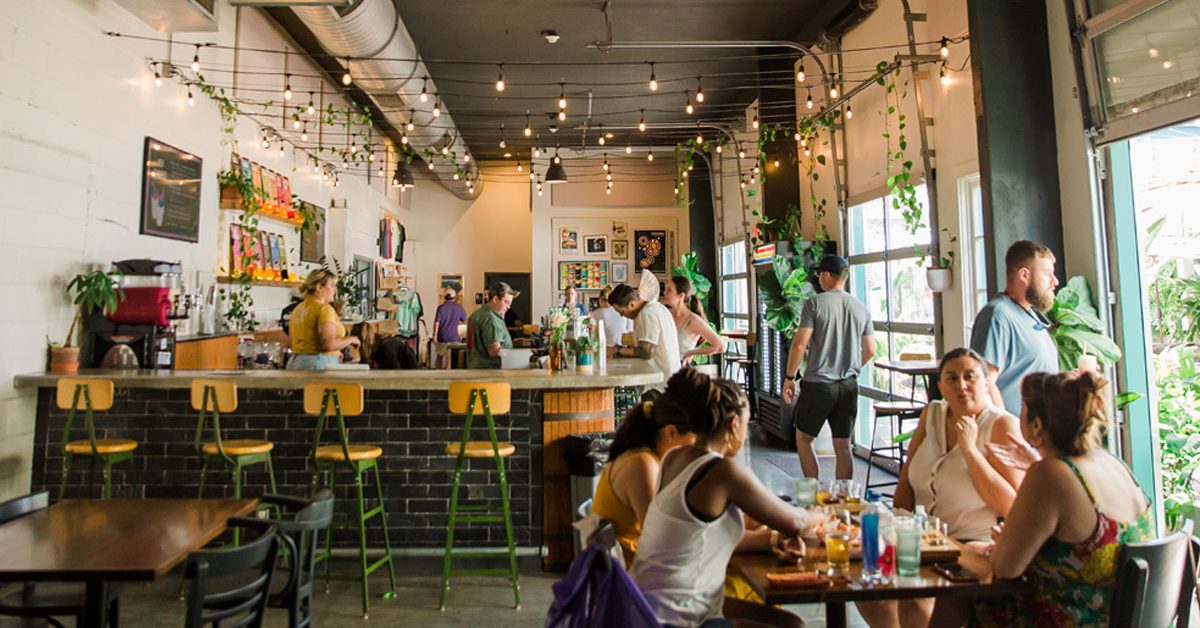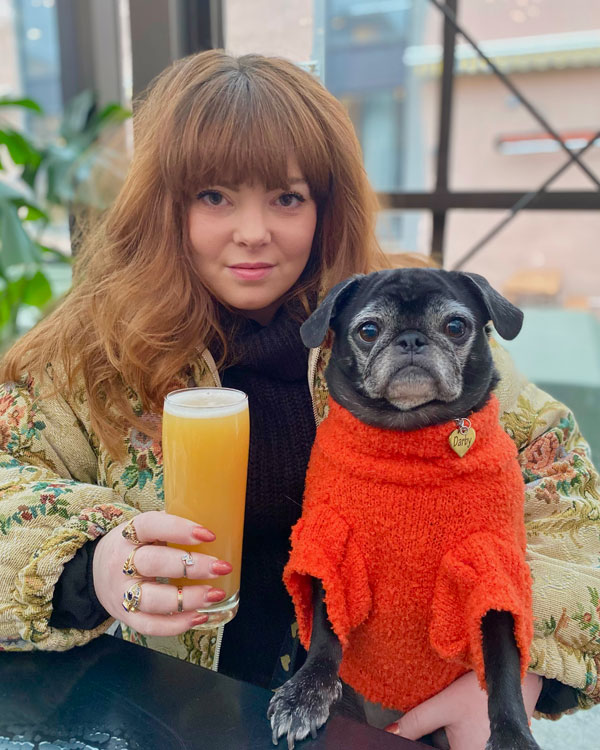Consider the jewels of the New Orleans crown: the Sazerac, the Ramos Gin Fizz, the Pimm’s Cup, and the Hurricane. They are a testimony to the city’s position as a top drinks destination. Ingredients such as Peychaud’s Bitters altered cocktail culture forever, and bartenders around the globe have long looked to New Orleans for inspiration. The major beverage alcohol category noticeably absent from the city’s resume, though? Craft beer. Until relatively recently, that is.
For a town visited by millions of thirsty imbibers each year, it may seem surprising that New Orleans’s craft brewery scene is both young and small. Until the late aughts, local offerings were sparse. Dixie Brewery had been running since 1907; after a shutdown due to Hurricane Katrina, it was revived, and in 2020, its name was changed to Faubourg Brewing. Known for producing perhaps the most recognizable Louisiana craft beer nationally, Abita Brewing set up shop 30 miles outside of New Orleans in 1986 and continued to be one of the only representatives of craft beer in the area for decades. Parish Brewing came along in 2003, also outside of New Orleans. But plenty of hurdles hindered real growth—namely Louisiana laws banning sales from taprooms. Legislation passed in 2015 making taprooms a viable possibility, a change that happened alongside a growing contingent of determined brewers ready to put New Orleans on the craft beer map.

Before this shift, the best-known spots for craft beer within the city limits were not breweries, but beer bars or shops. The Avenue Pub opened in 1987, d.b.a. opened in 2000, and Stein’s Deli opened in 2007. This was the reality of craft beer in New Orleans when Kirk Coco opened NOLA Brewing on Tchoupitoulas Street in the Irish Channel neighborhood in 2008.
“Coming out of [Hurricane] Katrina, the city was in a period of complete repair, redefining our industry, our innovation, and what businesses could flourish out of this complete disaster,” says Doug Walner, NOLA Brewing CEO and chairman since 2018. “This was a city with a rich history of brewing, but virtually all of it had died off in the ‘70s and ‘80s.” Walner says Coco was intrigued by the opportunity. “He realized this is something that’s big in the rest of the country; we should have our own contribution.”
As NOLA Brewing opened seven years before that legislative change, they got a jump start teaching locals about craft beer and building community around it with “Free Fridays,” when people would hang out outside of the brewery and drink gratis beer. During those early years, NOLA Brewing helped build interest in craft beer, laying the groundwork for New Orleans to become a craft beer destination, too.
The demand was growing, but it took years for more breweries to answer the call. Courtyard Brewery and Second Line Brewing opened in 2014, and after taproom sales became feasible, more followed suit: Urban South Brewery in 2016; Brieux Carré, Port Orleans Brewing Co., and Parleaux Beer Lab in 2017; and Miel Brewery in 2018.

There was a learning curve for locals who suddenly had these homegrown craft beer options. Miel cofounders Janice Montoya and Alex Peyroux started telling their families and friends about their plans for a brewery and taproom and were met with confusion that was absent in more developed craft beer hubs such as the Pacific Northwest or the Northeast. Montoya says they received reactions assuming they’d serve cocktails and wine and tapas, too, or that, conversely, they’d focus on just one beer style, like the familiar Abita amber. “We were like, ‘No, we’re making one thing, beer. No, we’re making all different styles.’”

“The beginning was definitely about us educating our customers,” says Brieux Carré head brewer Charles Hall, who joined the team about three months into operations. “If we opened on day one with six Pilsners, I don’t think people would have gotten it. Slowly integrating classic European lagers and traditional styles, and teaching people about them, has allowed us to focus our menu—we have five Pilsners on right now.” They are also now up to six LUKR taps, a sign of Brieux Carré’s dedication to lager. The seven-barrel brewhouse, which produced 600 barrels last year, has grown to seven fermenters to accommodate their love of—and locals’ demand for—lager.
An Open Door
When asked if the city’s famed cocktail reputation made it difficult to establish a reputation for good craft beer, too, it seems a more popular opinion that it’s helped. For both locals deeply familiar with the city’s creativity and demonstrated quality, and tourists coming to experience that, there’s an open door to experience other beverages.
“Being in a lauded cocktail town, it ups the competition and the standards,” Peyroux says. “People are coming here from New York and going to work at the nicest cocktail bars in town, playing with flavors no one else sees, and trends start picking up. We want to match that, that quality and level of service. It makes us try harder.”

Besides, Hall points out, cocktails may bring people to New Orleans, but craft beer provides a necessary respite. “New Orleans is a place where people want to have a good time all day, and beer is a little more conducive to that than Hurricanes. Our session beers work well for that. We open at noon and people come in right away, whereas Frenchmen [the New Orleans street famous for bars and live music] doesn’t really get bustling until seven or eight.”
While the city’s worldwide cocktail renown acts as a bridge and point of inspiration rather than competition, other challenges persist from the New Orleans water to the aforementioned Louisiana laws.
“Our water here is terrible for brewing beer,” Hall says. “It’s got a high pH, it’s very hard. Almost everyone I know in town has an RO [reverse osmosis] system to build our water how we want it.”
The water profile is an obstacle brewers can overcome; Louisiana laws are a more daunting hindrance. Taprooms cannot sell any other kind of alcohol unless they operate as a brewpub. It’s a constant pain point, and why NOLA Brewing has pivoted to brewpub status. They only sell beer out of their own location and offer a full food menu with other types of beverages, along with a popular live music lineup. The goal, though, to Walner, is to be a community hub. While breweries such as Brieux Carré, Miel, and Parleaux are still grappling with the laws as taproom breweries, they keep their distribution footprints small in order to focus on community as well.
A Vibrant Culture
To be a part of the craft beer scene in New Orleans is to be a part of the city’s vibrant culture of culinary delights, thoughtful drinks, deeply rooted music traditions, and an emphasis on socializing within the community. That opportunity continues to grow the number of breweries and attract the likes of the Neighborhood Restaurant Group, the parent company of Washington D.C. beer bar ChurchKey, D.C. brewery Bluejacket, and the former New York City beer bar The Grand Delancey. NRG beverage director and partner Greg Engert says years of interaction between Bluejacket and the New Orleans beer scene solidified the desire to put down roots in the city. The Avenue Pub’s then-owner Polly Watt extended the invitation to put Bluejacket on at the bar, and Bluejacket went on to brew seven annual collaboration beers for Mardi Gras. NRG’s addition to the New Orleans beer scene, Brewery Saint X, opened in the spring of 2023.
Saint X’s beer is the latest evidence that New Orleans imbibers, both local and visiting, are interested in drinking experiences they can’t find anywhere else. Despite the area’s famously hot and humid climate, Engert says they’ve seen sales for their cask beers double in the last six months. Guests are realizing just how refreshing an ale served at 50° F can be. “New Orleans drinkers are thoughtful, whether it’s the people who live there or the people who go there,” Engert says. “We’re seeing people get excited about cask ale and Czech-style lagers that take eight weeks and get served on side pulls. This is how craft beer got people excited in the first place—they’re interested in stories and technique, and that is so relevant in New Orleans.”
Saint X joins a group of breweries driven by the chance to directly contribute to what makes New Orleans unique.

“This is a city where people don’t live in their houses, they live in the streets,” said Parleaux Beer Lab founder Eric Jensen. “It’s a point of pride to be able to create something that contributes to the social capital people exchange on the streets every day. To have Urban South or Parleaux or Brieux Carré helping to provide libations at a crawfish boil in someone’s backyard is special.”
CraftBeer.com is fully dedicated to small and independent U.S. breweries. We are published by the Brewers Association, the not-for-profit trade group dedicated to promoting and protecting America’s small and independent craft brewers. Stories and opinions shared on CraftBeer.com do not imply endorsement by or positions taken by the Brewers Association or its members.


Share Post